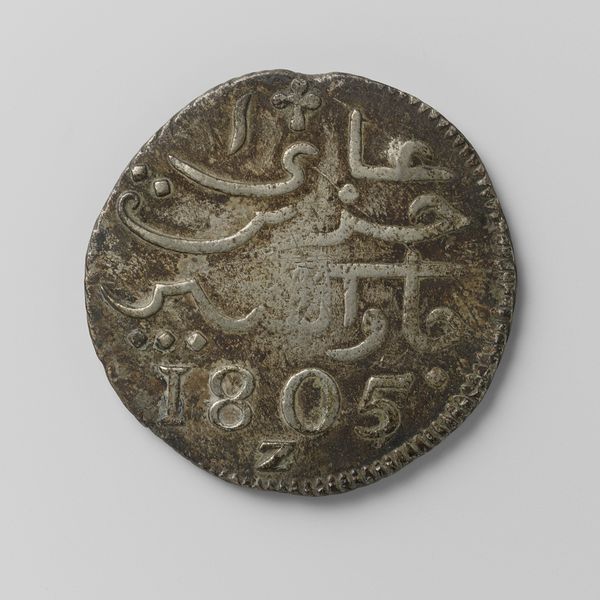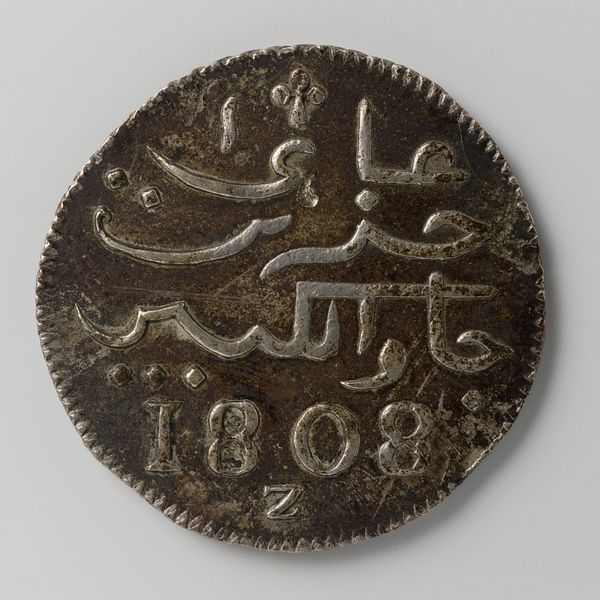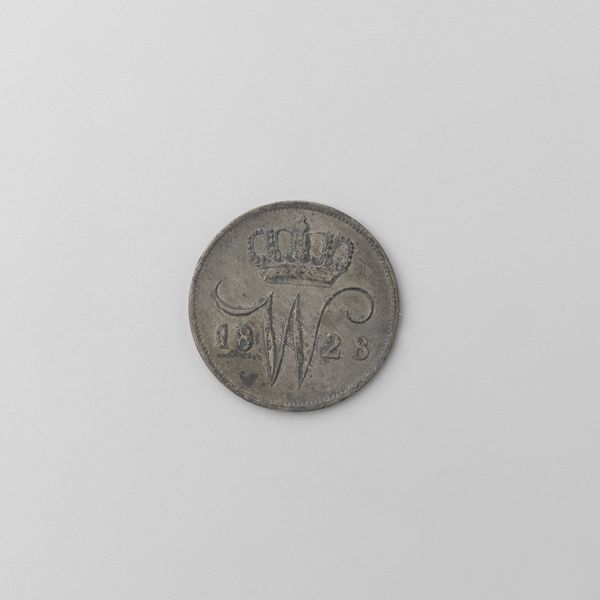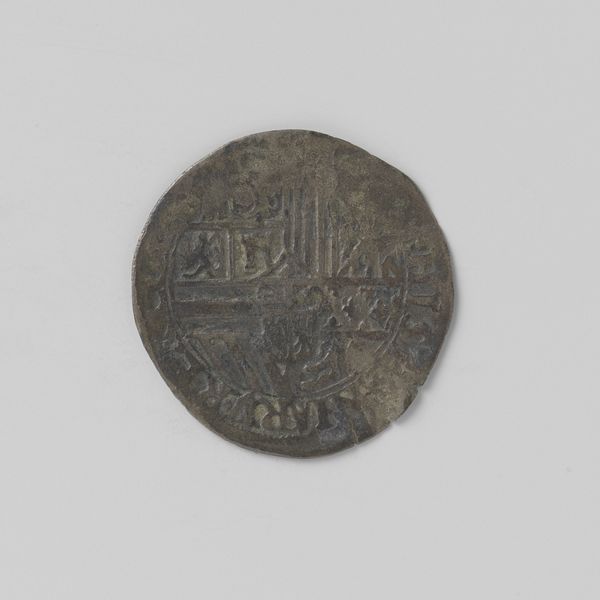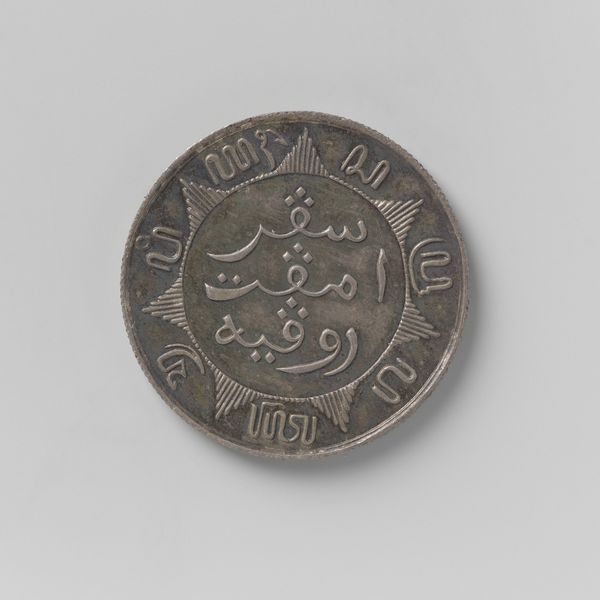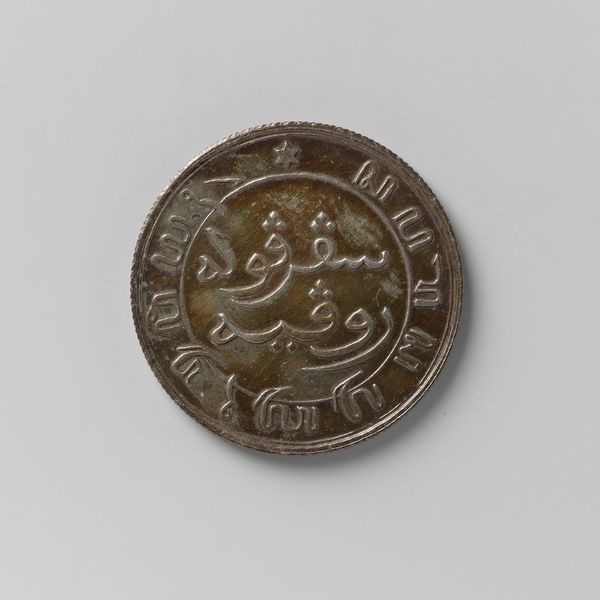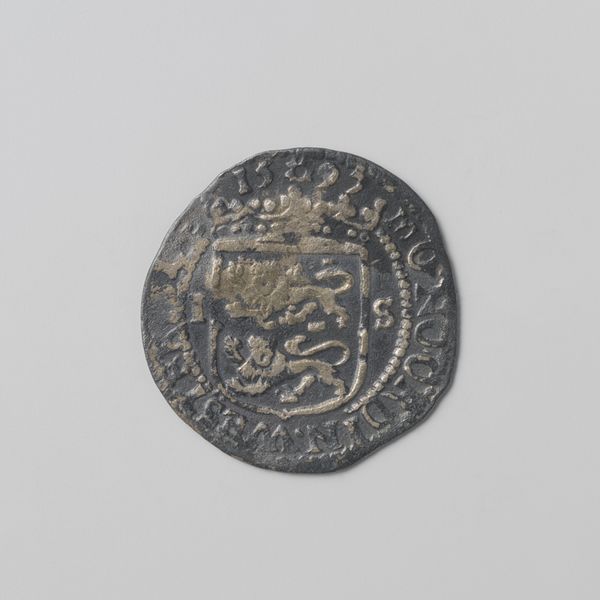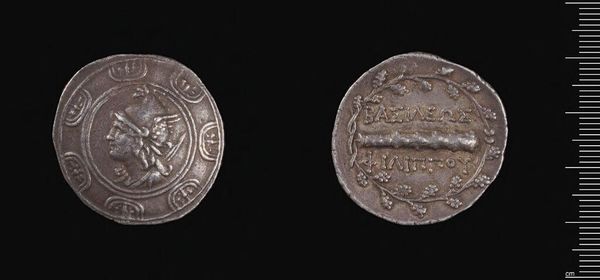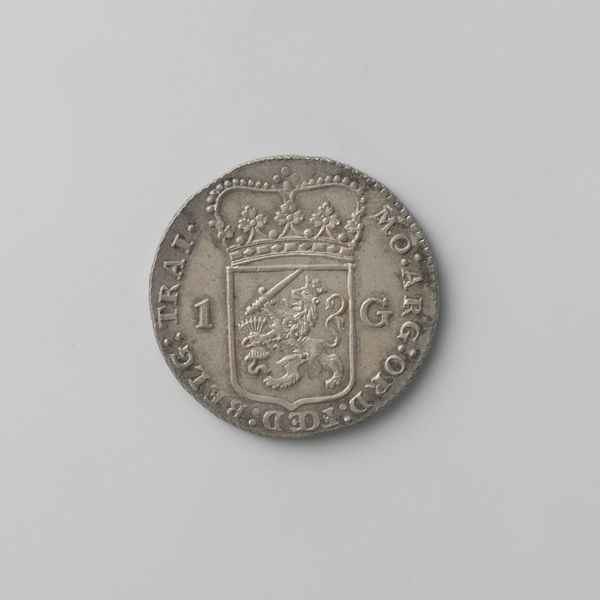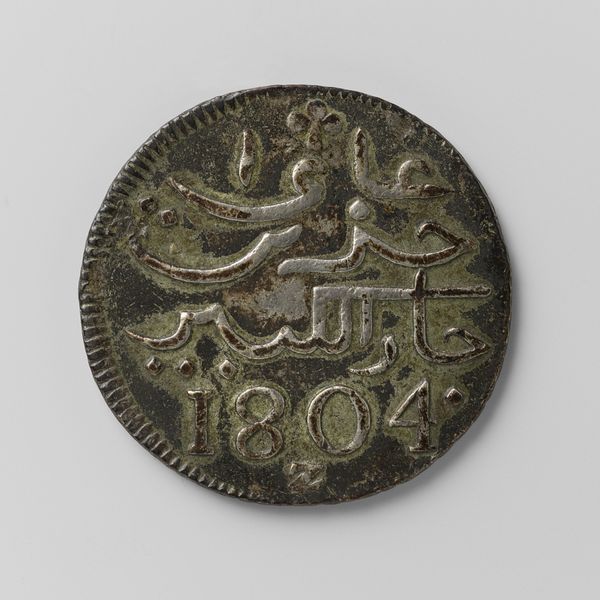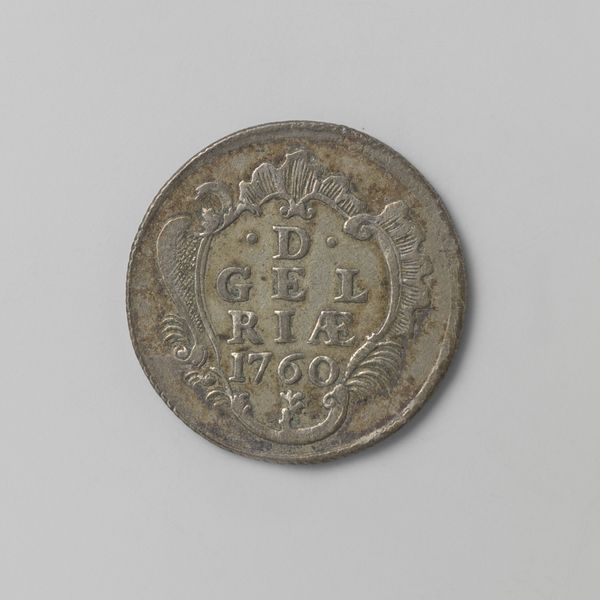
silver, print, metal
#
still-life-photography
#
silver
# print
#
metal
#
appropriation
#
islamic-art
#
coin
Dimensions: diameter 2.6 cm, weight 13.24 gr
Copyright: Rijks Museum: Open Domain
Editor: So this is a silver coin from the Dutch East Indies, dated 1801. The inscription is beautiful, almost ornamental, yet it's also clearly functional, a form of currency. What strikes you most about this object? Curator: I'm immediately drawn to the complex history embedded in the materiality of this object. Silver, extracted under colonial labor, transformed into a tool of economic and political control stamped with unfamiliar iconography. How was this coin produced, what were the labor conditions? It speaks to flows of power and materials across continents. Editor: That's fascinating. I hadn't considered the colonial aspect in terms of material extraction. Do you think the unfamiliar iconography would have resonated differently depending on who was handling it? Curator: Absolutely. For the Dutch, it was a marker of colonial reach and economic dominance, a way to control markets. For the local Javanese, it may have represented a form of forced integration into a system that devalued their labor and resources. The visual language is appropriated, transformed for use by a foreign power. Editor: So the coin isn't just an object of trade, but also a statement of power and control rendered visible. What kind of labor do you think went into producing the die for the print on the coin, considering the detailed patterns? Curator: Intricate metalwork requiring skilled craftsmanship was likely involved, which, depending on who was producing the coins, reflects a kind of appropriation or collaboration. Perhaps Javanese artisans were contracted, willingly or otherwise. Investigating their role unveils another layer of this complicated colonial history. Editor: It’s interesting to think about how this tiny object encapsulates such huge economic and political issues. It certainly changes my perception of its value. Curator: Precisely. Its worth transcends monetary value; it becomes a symbol of the complex interactions between labor, materiality, and imperial ambition.
Comments
No comments
Be the first to comment and join the conversation on the ultimate creative platform.
